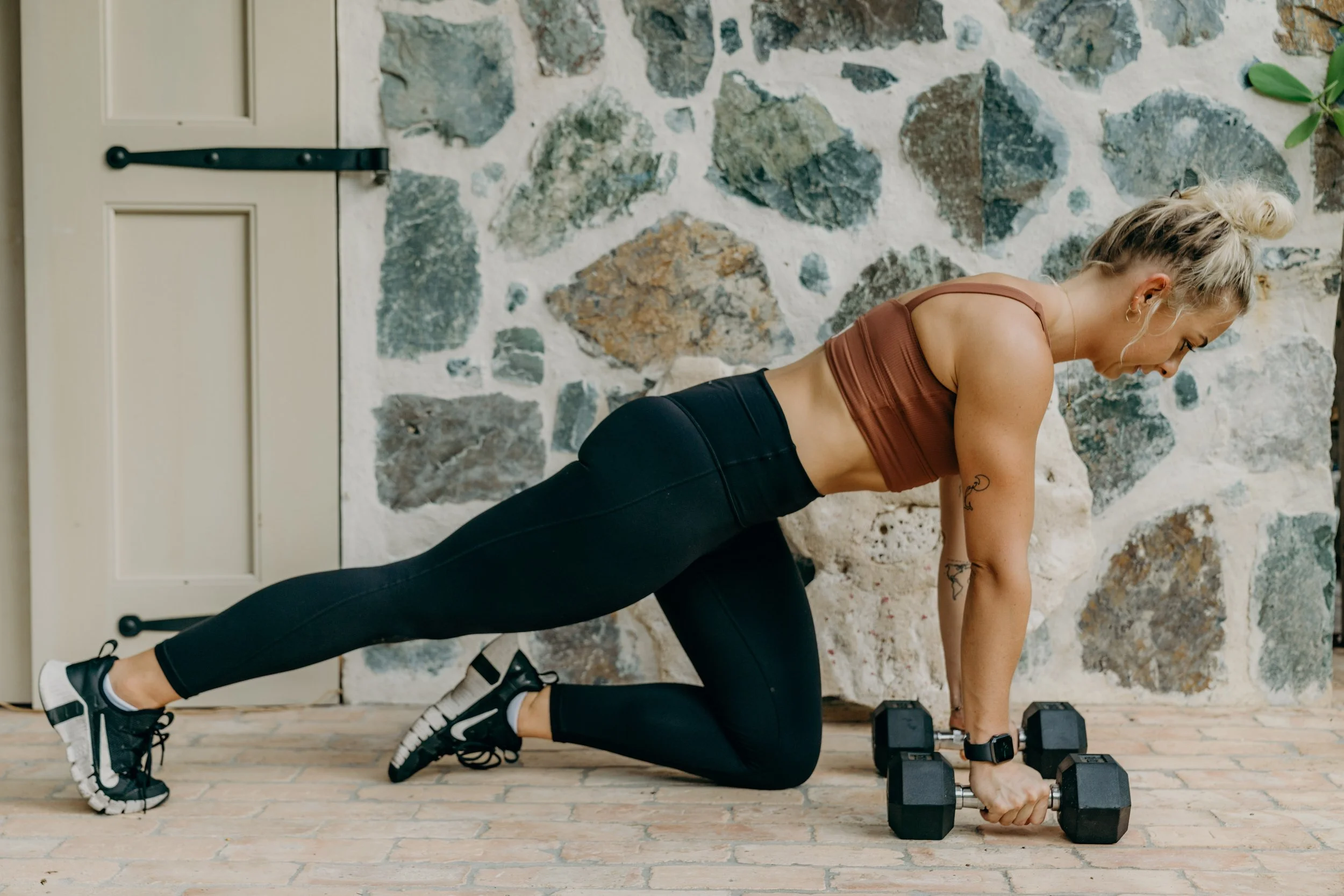LISS vs. HIIT
If you can't stand the thought of cardio because you think of it as intense, exhausting and literally breath-taking — this one is for you!
I want you to know that cardio DOESN'T always need to be torture. It doesn't always need to involve speed, agility or crazy endurance.
In fact, overdoing HIIT (high-intensity interval training) can hurt you more than it can help you!
Mixing up your cardio by having some low-intensity days AND high-intensity days is a much better plan, IMO. You'll reap both benefits, and you'll continue enjoying cardio — not dreading it!
All about HIIT
What does it mean? HIIT stands for high-intensity interval training. Think sprints, rowing, jumping, burpees, etc.
It's become a buzzword on social media and in the fitness community, but a true HIIT workout for a beginner or intermediate is usually 30 minutes (this is the sweet spot from my experience as well as my clients).
What are some benefits of HIIT? There are many, but it's still important to NOT overdo it!
Short sessions
Challenging
Better for long-term fat loss
Incorporates strength training, so it maintains muscle retention
Helps your body to continue burning calories for up to 24 hours after
What are some disadvantages of HIIT? Take a break from HIIT if these downsides start to get in your way:
Demanding on the muscles and joints (stop your workout and talk to a doctor if you experience any serious pain)
Longer recovery time
Intimidating at first
When should I do it? I personally would recommend starting with one or two max HIIT workouts per week for a while. Get your body used to it! On the other days, focus on LISS (getting to that below) and strength training.
Once your stamina increases, you can do it max 3 times per week. You definitely don't need to do HIIT any more than that! 3 HIIT workouts in one week is essentially 6 days of being in a constant state of Post-Exercise Oxygen Consumption (EPOC) — when your body continues burning calories for a day after.
All about LISS
What does it mean? LISS stands for low-intensity interval training. Think walking at a slight incline and/or pace, light jogging, using a stationary bike at a low resistance, etc.
A LISS workout is usually anywhere from 20-60 minutes. You can even tack on a 20-minute session before or after a strength training session as a warm-up or cool-down. Or, you can dedicate a full 30-60 minute workout to this steady-state cardio.
What are some benefits of LISS? The benefits are very different from HIIT!:
Easier on the muscles and joints
Less risk of injury
Better at fat burning initially
What are some disadvantages of LISS? Always listen to your body and change things up when needed!:
Might get tedious or boring after a while
Longer sessions
Our bodies quickly adapt to it, and fat burn decreases after a while
When should I do it? Beginners should include LISS into their workout plan 3 times a week. You could add on LISS as a warm-up or cool-down, or dedicate entire sessions at the gym to LISS. Mix and match!
These days, I add on a 20-minute LISS warm-up or cool-down every time I go to the gym. You definitely don't have to do this, but I genuinely enjoy it!
What's the best plan for me?
If you're not sure how to implement LISS and HIIT into your gym schedule, reach out to me!
I can help you come up with a healthy, balanced training plan based on your lifestyle, goals, fitness level, diet, and other factors.
You can also shoot me a DM on Instagram @madeline_grace or @madstrengthcoaching. Happy to help!
